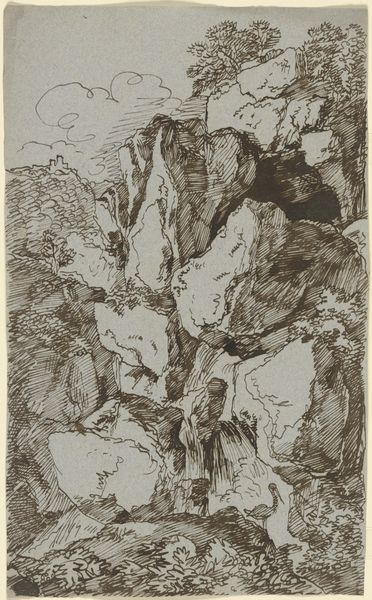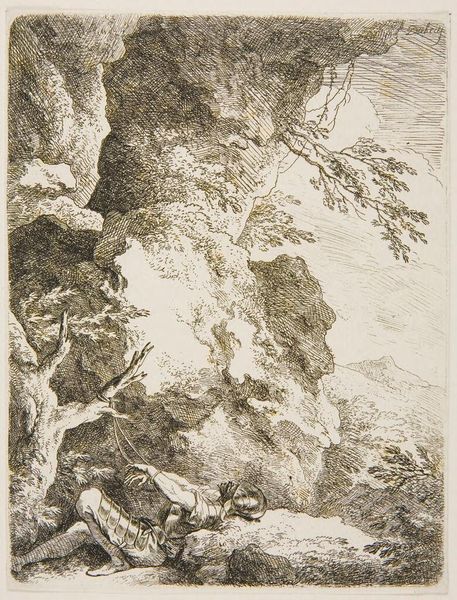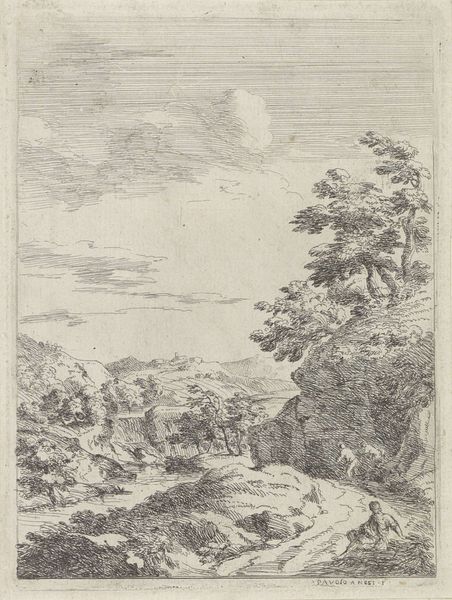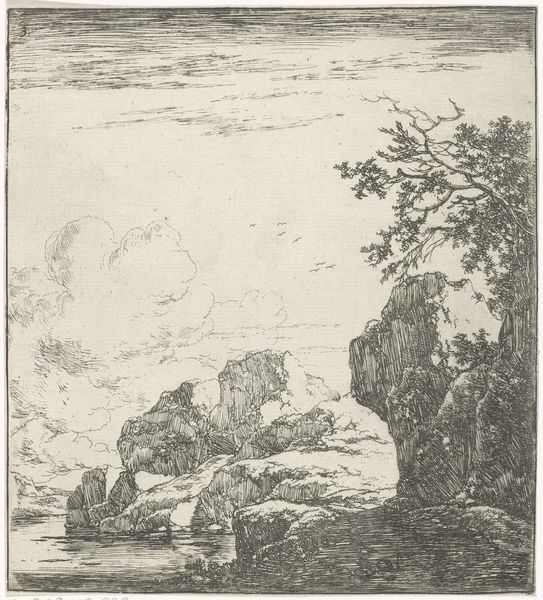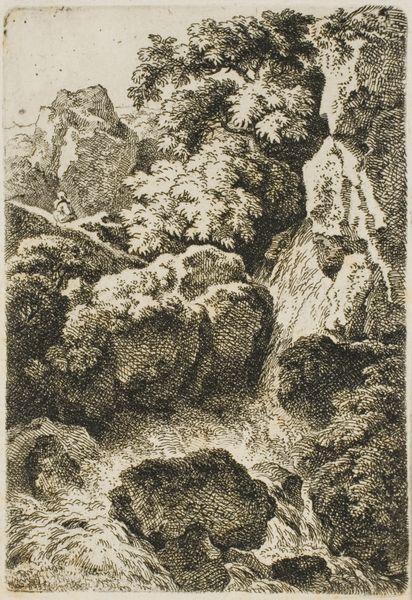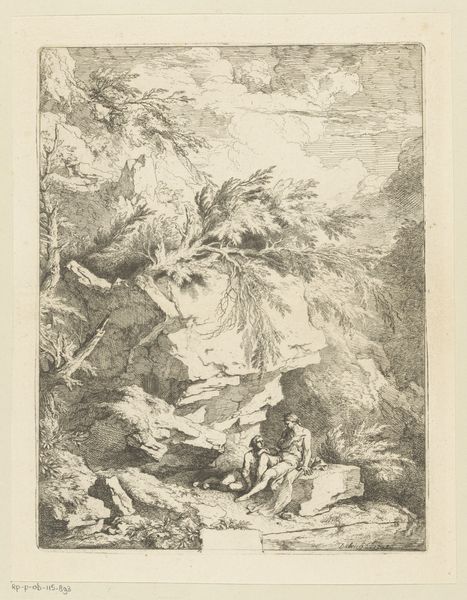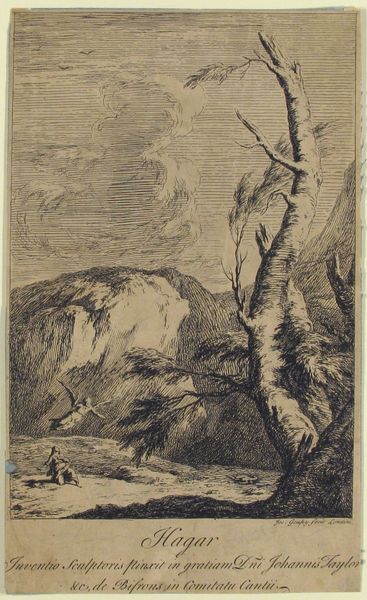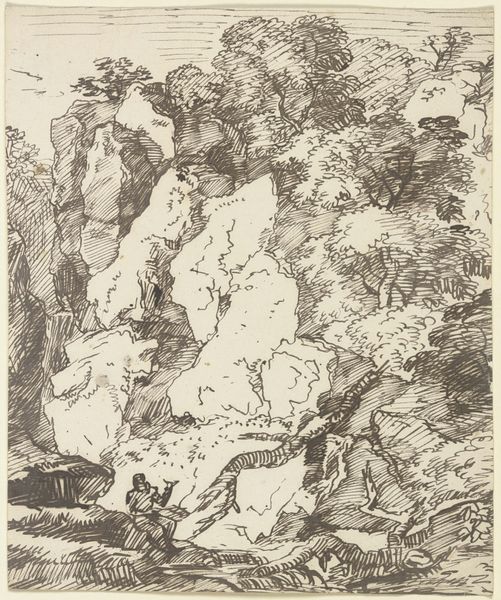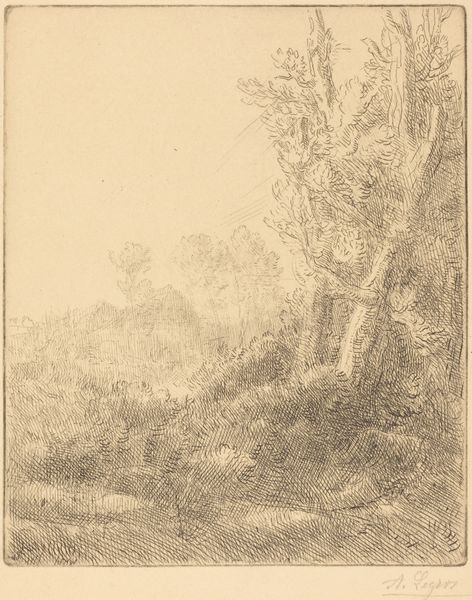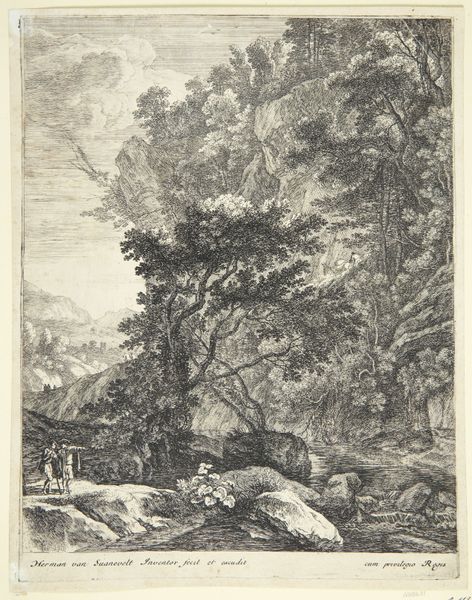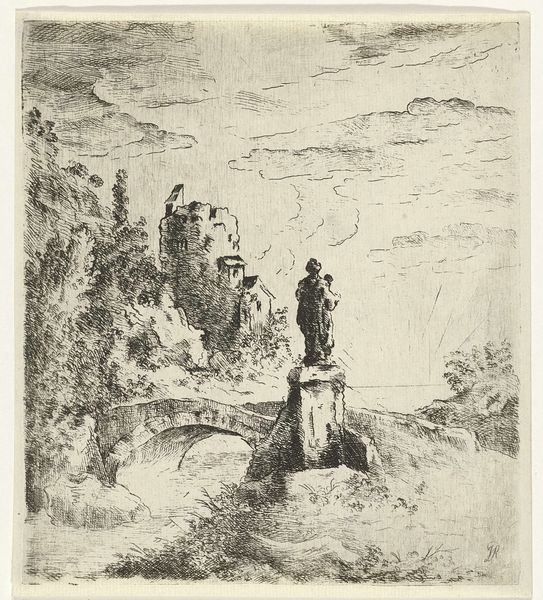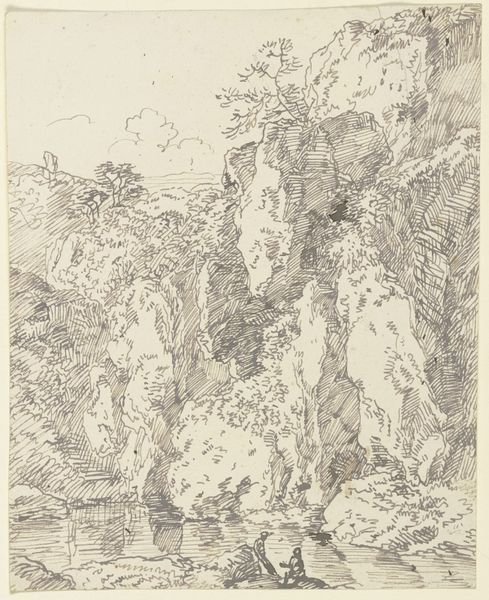
drawing, pencil
#
pencil drawn
#
drawing
#
pencil sketch
#
landscape
#
etching
#
pencil
#
italian-renaissance
Dimensions: height 230 mm, width 186 mm
Copyright: Rijks Museum: Open Domain
Editor: So, here we have Parmigianino’s "Studie van een landschap" or "Study of a Landscape," created sometime between 1513 and 1540. It's a pencil drawing now held at the Rijksmuseum. I’m struck by the density of the foliage, almost claustrophobic. What do you see in this piece that I might be missing? Curator: Well, I'm immediately drawn to how the composition speaks to a kind of primal relationship with nature, particularly how landscapes held a deeper, often spiritual significance. This isn't just a pretty picture of trees; look at the way the dark pencil strokes create this feeling of enclosure you noticed. Does that not speak of something beyond observation, of something lurking, something the forest keeps hidden? Editor: I didn't think about it in that context, I was just looking at how the artist plays with dark and light areas. It makes me wonder about how people at that time interpreted nature versus how we see it now. Is there a spiritual aspect? Curator: Exactly! Think about the concept of the "sacred grove" in ancient cultures – a place of ritual, of connection to the divine. I wonder if Parmigianino's forest holds a echo of that memory? The drawing technique feels almost like an etching, giving it an archaic feel. Perhaps landscape carries the cultural memory. Don't you think? Editor: I suppose, the setting could definitely be the sort of place someone would consider mystical or sacred back then, because they did not really understand those deep dark forests. Thank you for your perspectives. Curator: And thank you! Looking at the familiar through different lenses opens a richer understanding, wouldn't you agree? Now, let’s move on to the next piece…
Comments
No comments
Be the first to comment and join the conversation on the ultimate creative platform.

